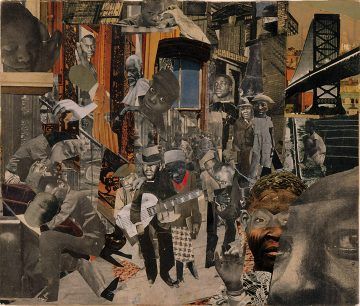Sarah Elizabeth Lewis at the NYRB:

An American Odyssey: The Life and Work of Romare Bearden by Mary Schmidt Campbell, the distinguished art historian, former director of the Studio Museum in Harlem, and president of Spelman College, tells the captivating story of how Bearden’s heritage, education, community, and politics informed the evolution of his artistic career. It addresses a foundational question: What is the role of the artist in the history of race and rights in this country? Campbell opens with a brief reflection on the work of Frederick Douglass. Before the New Negro Movement and the civil rights movement, it was Douglass who argued that images—specifically, the new medium of photography—had the potential to help America see itself more critically and capaciously. In lectures delivered during the Civil War, Douglass argued that pictures and images could help America out of its democratic crisis. As the most photographed American man in the nineteenth century, Douglass knew that photographs could inaugurate counternarratives that expand our notion of who counts, who belongs in society. His was a new argument about the power of representational justice—he asserted that being represented justly was a crucial tenet of democracy.
more here.
